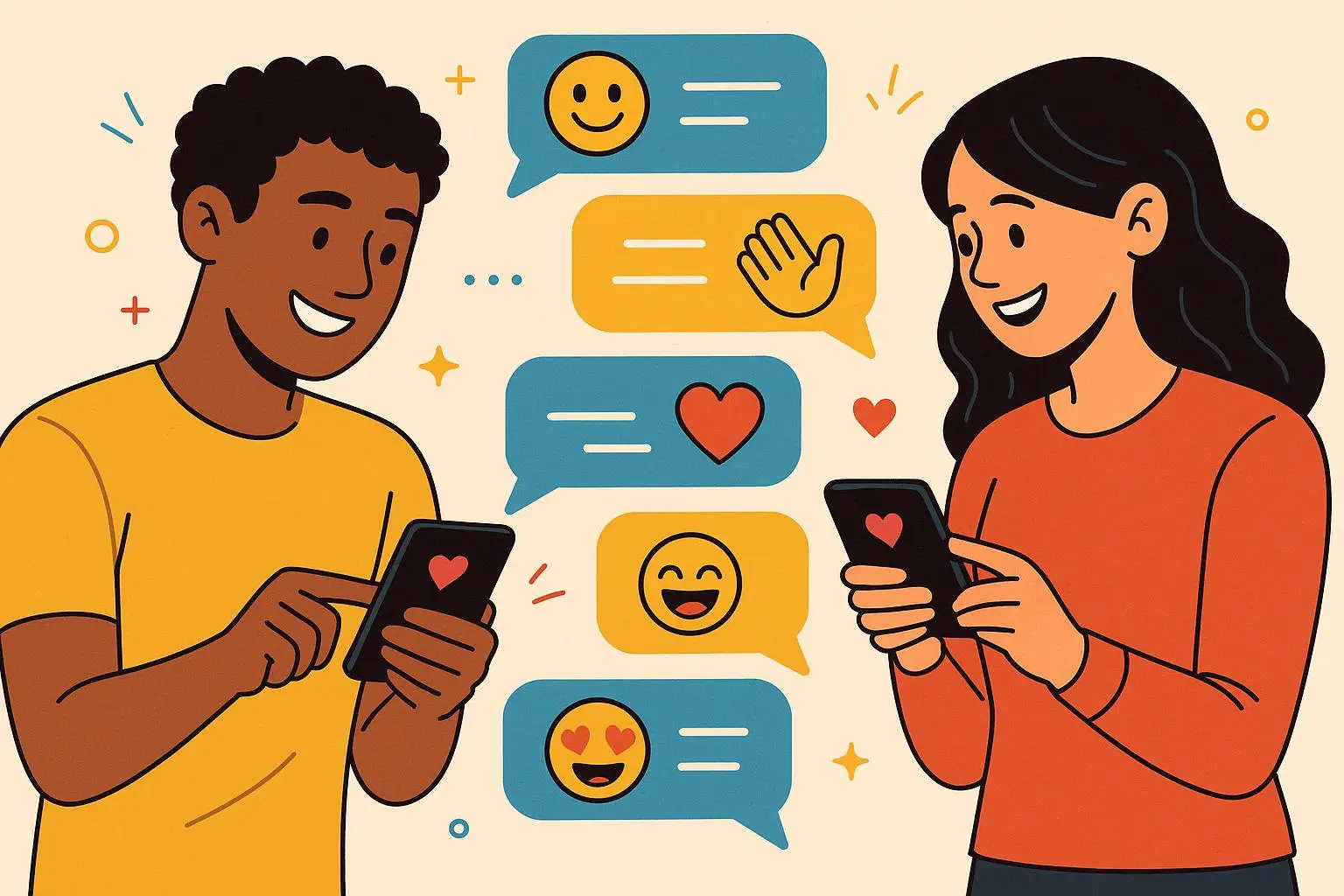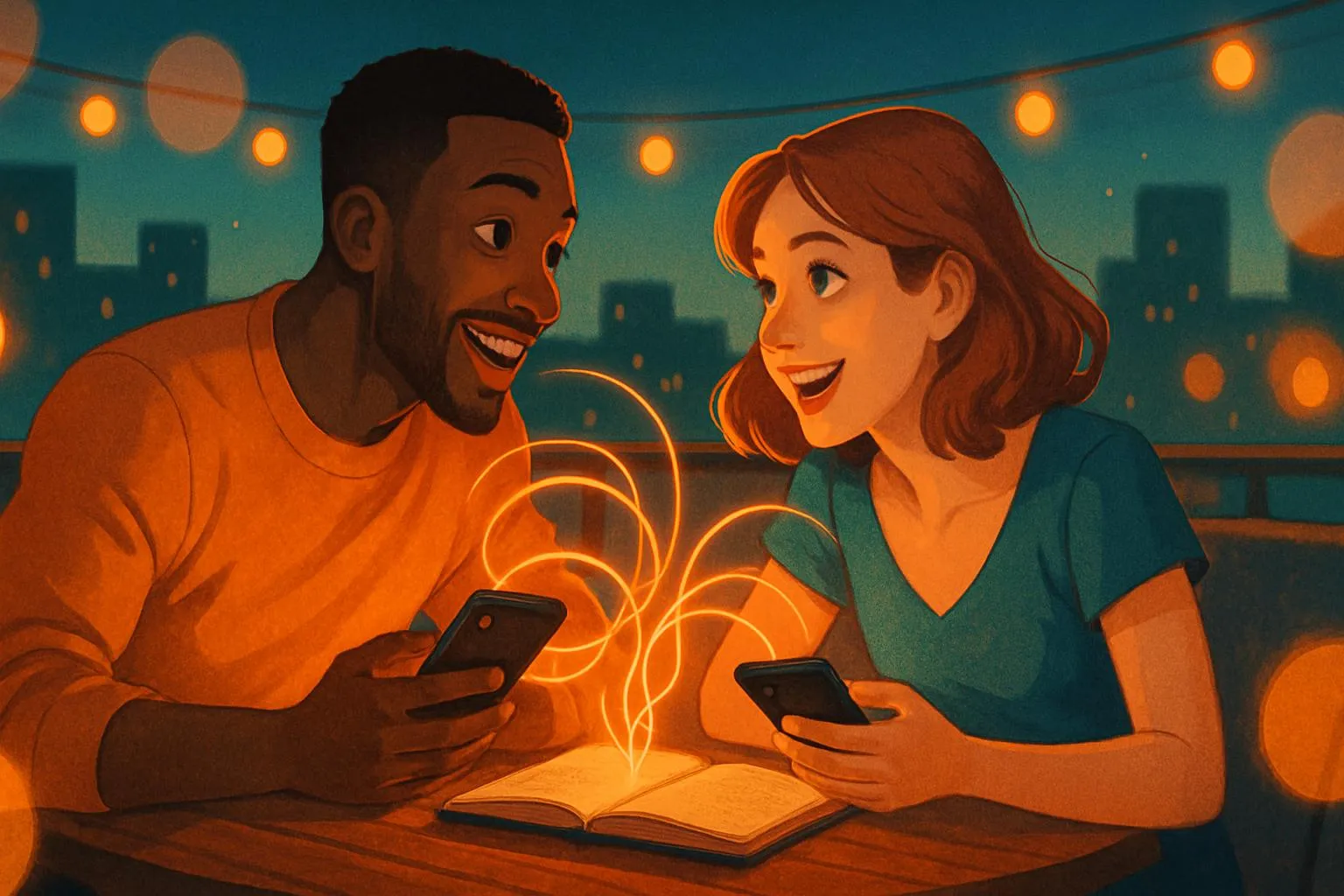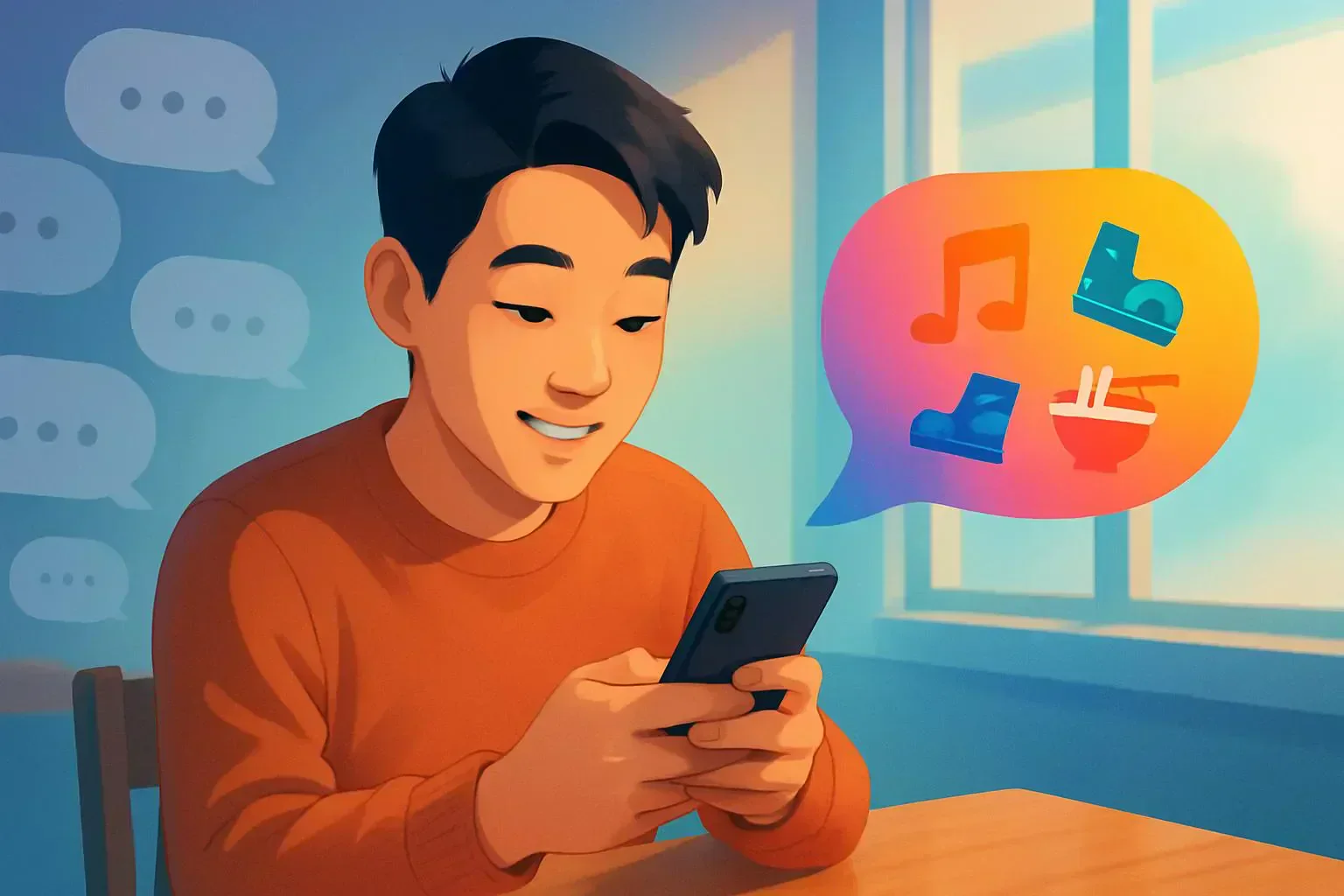
How to Restart Dating App Chats and Turn Matches Into Dates
Published on 2/21/2025 • 6 min read
I know that sinking feeling well: you craft a message, hit send, and the dots bounce around for a moment before the conversation fades. That “seen” badge can shout louder than an awkward in-person pause. Over five years of dating-app use, I’ve revived stalled chats about 40% of the time, and roughly 1 in 6 matches turned into a real date within two weeks using these tactics. Below are the techniques that consistently work: opening with personality, keeping momentum without sounding like an interrogator, and moving toward a meetup without the awkwardness.
Why conversations die (and why it’s not always you)
Let’s be blunt: most boring chats aren’t a verdict on your worth. They happen because of generic openers, one-sided exchanges, shallow emotional depth, or mismatched expectations. I once matched with someone whose profile screamed curiosity and adventure—but my opener, a lazy “Hey,” went nowhere. It wasn’t me; it was the message.
Dating app chats lack voice tone, body language, and shared space. What you write is all you’ve got to convey warmth, curiosity, or humor. If your message blends in with others, your match has little reason to reply.
Part 1: The Opener — Beyond “Hey”
First impressions matter more on apps than in most in-person settings. Treat an opener like a small gift: personalized, thoughtful, and a touch intriguing. Tailored openers invite stories; generic ones invite generic replies.
The Profile Detective
Scan photos and prompts like a detective, not a critic. For example, I noticed a match posing beside a battered surfboard in Boston-area photos—my opener referenced the board and asked about the biggest wipeout they’d survived. They replied with a vivid story that lasted three messages and led to a surf-watching walk two days later.
Examples that work:
- “Your picture in front of the Colosseum is amazing — did you try the cacio e pepe, or were you too busy fighting off gladiators?”
- “I see you’re into Succession. Controversial: who was the least terrible Roy sibling?”
- “A fellow dog person — what’s the most ridiculous thing your golden has ever done?”
The idea is to notice something specific about their profile. It shows effort and feels warmer than a blank “hey.”
The Engaging Question
Open-ended questions invite stories, opinions, or small flights of imagination. Skip questions that can be answered with a single word; go for prompts that make them pause and smile.
Reliable starters:
- “What’s the most spontaneous thing you’ve done recently?”
- “If you could have any superpower for a day, what’s the first thing you’d do?”
- “You said you love hiking — what trail changed the way you feel about the outdoors?”
You won’t land fireworks every time, but these create space for personality to come through. Genuine curiosity beats forced cleverness.
Part 2: The Rally — Building Momentum
Think of a conversation as a friendly rally: keep the ball in play, don’t try to win every point. Balance interest, personal disclosure, and playfulness.
Offer and Ask (the “Yes, and…” method)
When someone answers, don’t pivot immediately to another question. Acknowledge their reply, offer a related personal detail, then ask a follow-up. I learned this in improv — “Yes, and” creates continuity and connection.
Example flow:
- Them: “I booked a last-minute flight to Costa Rica!”
- Bad reply: “Cool. What did you do there?”
- Good reply: “Costa Rica! I once went backpacking in Thailand and loved the jungle vibes (offer). What was the absolute highlight of your trip?”
The offer makes the chat reciprocal. It signals you’re not interrogating; you’re inviting them into a shared exchange.
Use Mini-Stories to Stay Memorable
Stories stick. Reply with a tiny, vivid anecdote (30–60 words) to create emotional texture. For example: “I once got lost in a record store and left with a Miles Davis album that felt like a midnight conversation.” That paints a scene and invites them to share a memory.
Keep Playful and Real
Genuine humor is glue. Light teasing — sparing and kind — builds momentum. Mirror their tone: if they respond formally, dial it back; if they lean into a joke, continue. Text empathy is low-bandwidth; follow their lead until you establish comfort.
Part 3: Rescue Tactics for When the Chat Stalls
Even strong openers can sputter. Here are gentle, reliable ways to reignite the banter without sounding desperate.
The Pivot Question
Switch topics smoothly. If their last message didn’t land, try a new, high-engagement question that’s easy to answer and invites a story: “Totally random — what snack do you carry for emergencies?” It’s playful and low-pressure.
The Notice-and-Return
A gentle nudge can be disarming. Don’t ask “Why didn’t you reply?” Instead try: “I’m picturing you in the middle of something epic — did I catch you at a bad time earlier?” That removes pressure and gives them a graceful way back.
Two-Option Prompt
Offer low-stakes choices. These are easy to answer and inject momentum. Examples: “Which would you pick for a day: a surprise road trip or a spontaneous concert?” or “Pancakes or waffles — settle this for me.” People love picking sides.
Part 4: Moving from Chat to Date (without sounding rushed)
Timing is the tricky part. Push too soon and you seem needy; wait too long and the spark cools. My approach is a confident, casual transition. In my experience, when momentum is strong, asking within 3–7 messages (typically 24–72 hours) keeps things natural—and that’s when many of my successful date plans happened.
Look for Momentum Cues
Signals that it’s time to suggest meeting: effortless conversation, shared mini-stories, reciprocal questions, and overlapping availability. If you’re both sharing favorite local spots, it’s natural to take the next step.
Use an Easy, Specific Invite
Frame the invite around something they mentioned: “You said you love that jazz cafe on 5th — want to check it out Saturday? I hear their espresso is dangerously good.” It’s specific, tied to their interest, and gives a clear plan.
Less Pressure, More Options
If you sense hesitation, offer alternatives: “If coffee feels too soon, I’m down for a walk in the park instead. Which feels less awkward?” This removes pressure and shows you respect their comfort.
Part 5: Real Examples and Why They Worked
Example 1 (Surf opener):
- Me: “Your surf photo is wild — biggest wipeout story?”
- Them: A wipeout saga, plus an invite to watch waves.
- Result: We met for a 30-minute beach walk the next weekend.
Example 2 (Two truths game):
- Me: “Two truths and a lie — go.”
- Them: “I climbed Kilimanjaro, I play the sax, I hate chocolate.”
- Me: “I refuse to believe you hate chocolate. What made you climb Kilimanjaro?”
- Result: Long conversation and then a coffee date in Week 1.
Why these work: specificity, playfulness, and an offer that creates reciprocity.
What to Avoid (and what to do instead)
- Avoid long, flood-like paragraphs. Keep messages digestible.
- Don’t fire off rapid-fire questions; it feels like an interview.
- Skip generic compliments; opt for specifics.
- Don’t ghost if you’ve started a conversation. If you’re not feeling it, a polite message matters more than silence.
Quick Scripts to Keep in Your Pocket
Use these as scaffolding, not scripts:
- Personalized opener: “I noticed [specific detail] — what’s the story behind it?”
- Offer-and-ask: “That’s incredible. I once [brief anecdote]. What was the best part for you?”
- Stalled-chat restart: “Quick question — what’s your go-to comfort food when the week’s been a mess?”
- Date transition: “You mentioned you love [place/type of food]. Want to check out [specific spot] this weekend?”
On Using AI Tools — a Practical Note
AI reply-suggesters can help when you’re stuck. I’ve used assistants to brainstorm alternatives late at night; they gave me three tone-matched lines that I then personalized. If you try an AI tool, treat it as inspiration — tweak details, add your voice, and disclose your use only if it feels relevant. Avoid copy-pasting; authenticity wins.
Final Thoughts: Practice, Not Performance
Great texting is less about being witty every time and more about consistently showing up curious, respectful, and human. Not every match will be a movie script—some will be short and pleasant, others deep and surprising. Each conversation is practice.
Next time the three dots disappear, take a breath. Try a personalized opener, offer a tiny story, or use a two-option prompt to restart momentum. Pivot rather than panic. And when things stall, remember these tactics are tools—not guarantees. With curiosity and a willingness to be a little imperfect, you’ll be surprised how often a match turns into something real.
Micro-moment
A few weeks ago, a match lingered in limbo for two days. I remembered a tiny thread from their profile and sent a single sentence that tied to that moment. The reply came faster than I expected, and the conversation flowed like we’d picked up where we left off. That small shift—one thoughtful pivot—made all the difference.
Ready to Optimize Your Dating Profile?
Get the complete step-by-step guide with proven strategies, photo selection tips, and real examples that work.


